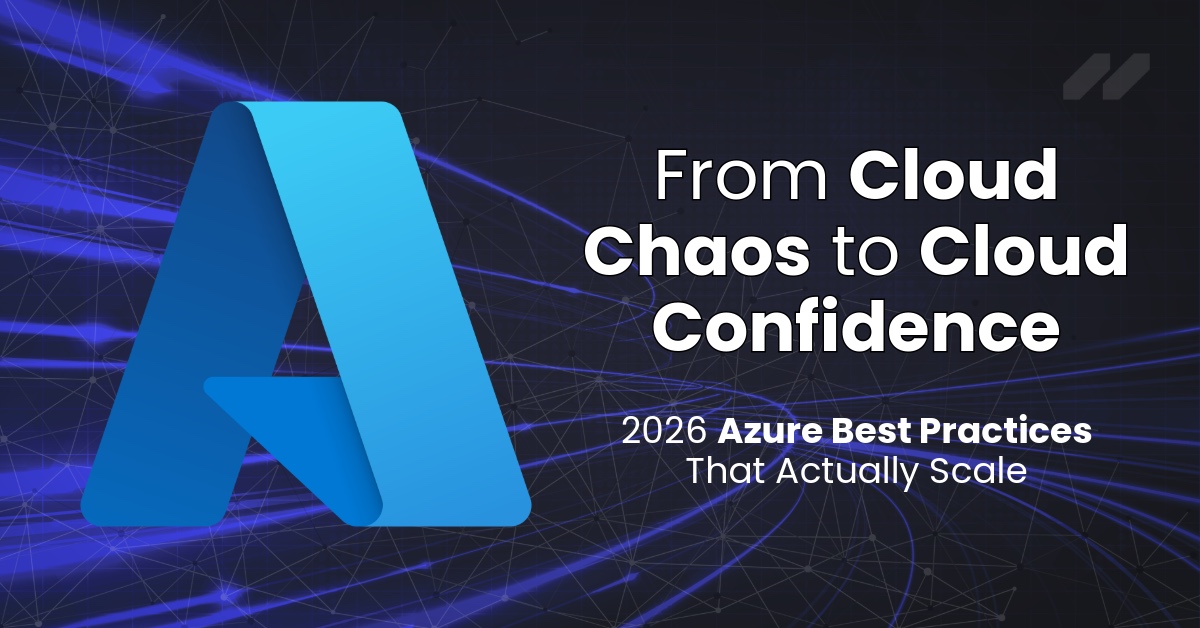
Lorem ipsum dolor sit amet, consectetur adipiscing elit, sed do eiusmod tempor incididunt ut labore et dolore magna aliqua. Ut enim ad minim veniam, quis nostrud exercitation ullamco laboris nisi ut aliquip ex ea commodo consequat. Duis aute irure dolor in reprehenderit in voluptate velit esse cillum dolore eu fugiat nulla pariatur.
Block quote
Ordered list
Unordered list
Bold text
Emphasis
Superscript
Subscript
What if your cloud didn’t have to rely on heroics because the rules, roads, and guardrails were already built in?
When you’re running dozens (or thousands) of Azure workloads, “best practices” alone won’t save your weekends. You need a living framework that outlives any single project or person, one that unifies cost, security, and reliability without slowing the business down. This blog lays out that framework in plain language, with pragmatic moves you can start this week.
Without a consistent foundation, every new workload becomes a custom snowflake—expensive to run, hard to secure, and impossible to audit. A strong landing zone turns growth into repeatable, low‑risk delivery.
A Landing Zone isn’t a neat template; it’s the foundation every workload stands on. Adopt Azure’s Cloud Adoption Framework (CAF) Landing Zones to get scalable governance out of the box: management groups, Azure Policy, and network baselines aligned to cost, security, and compliance.
Core elements:
Governance in practice:
A landing zone is the difference between “cloud chaos” and “cloud confidence.”
Manual clicks don’t scale—and they quietly become your biggest reliability and compliance risks. Putting everything in code makes your cloud auditable, repeatable, and fast.
Pick your tool, stay disciplined:
Policy as Code: Version and deploy Azure Policy via IaC. Add GitHub Actions or Azure DevOps checks for drift detection and compliance.
Gates and guardrails to add today:
Measurable benefits: faster, safer releases; auditable history; fewer human errors (the #1 outage cause).
Outages don’t care how elegant your architecture looks. If you can’t recover on demand, you’re betting the brand on hope.
Classify by business criticality:
Backup & Recovery:
Geographic redundancy: Use paired regions (e.g., East/West US, North/West Europe) and avoid circular dependencies—keep monitoring region‑independent.
Prove it with practice:
You can’t fix what you can’t see. Observability connects cost, security, and performance into a single operational picture so you can act before customers notice.
Centralize telemetry: Ship logs/metrics to Log Analytics with standardized naming. Use Application Insights for deep app traces.
Dashboards & SLOs: Build SLO dashboards per service/app—uptime, latency, resource health vs. target. Alert on anomalies with Azure Monitor/KQL; route to Teams/Slack with context and runbook links.
Retention by purpose:
Correlate cost + security: Overlay cost anomalies with Secure Score/Defender alerts—overspend and insecurity often share the same root cause.
Without governance, growth becomes drift. A Cloud Center of Excellence (CCoE) keeps your cloud evolving in sync with the business.
Who’s in the room: architecture, security, operations, finance, and development—cross‑functional, not bureaucratic.
What they own:
KPIs that matter: Secure Score trend, cost variance vs. budget, policy compliance rate, backup/restore success rate.
Close the loop: Turn every incident, audit, and optimization into code or process updates. Each quarter ends with new lessons codified.
Cloud excellence isn’t a steady state—it’s mastering change without losing control.
We turn cloud best practices into business outcomes quickly. Our teams work shoulder-to-shoulder with yours to design paved paths (not one-off projects), codify guardrails in your pipelines, and prove resilience with drills that become routine. We focus on four things that matter: clear governance, automated enforcement, observable operations, and recovery you can trust. The results are fewer midnight surprises, cleaner audits, and a roadmap you can scale without heroics.
Want the rest of the playbook?
➡️ Download the full eBook: Fill the form on this page, and we’ll deliver the eBook immediately.
Have questions about your environment?
➡️ Book a quick chat: Click to book, and let’s find time this week.
No pressure, no pitch deck—just clear guidance you can use tomorrow.